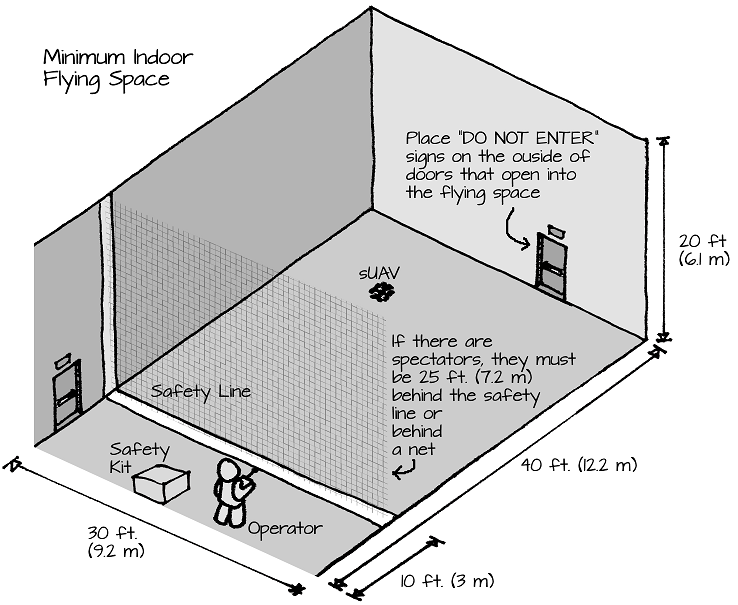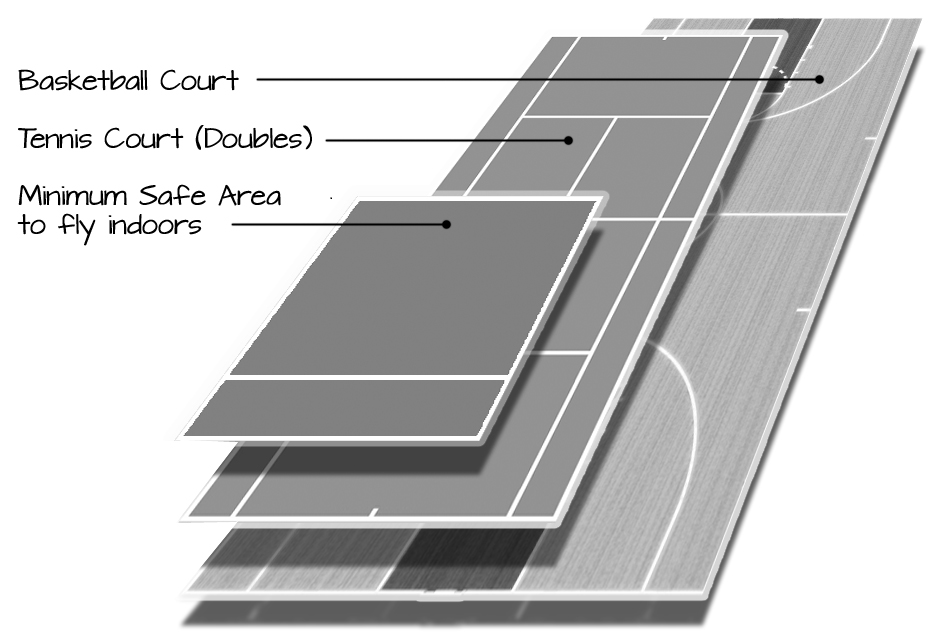Guidelines for Indoor Flying
Once you’ve built or otherwise obtained your sUAV, it is tempting to connect the battery and turn on the controller immediately. DON’T!
NEVER fly any sUAV larger than 0.55 pounds (250 grams) inside of a small room, including anywhere in your home, classroom, office or store!
Because of the way air flows near walls, ceilings, and floors, it is easy for an sUAV to get “sucked into” a surface and quickly lose control, often ending in a destructive crash. Indoor flying spaces should be carefully selected and prepared.
- Remove pets, small children, and anyone who may not be able or willing to follow directions or assess or respond to hazards from the area.
- Operator and all spectators and other people in the area must wear eye protection.
- It is important to have enough space for the sUAV and protection for the operator and spectators.
- Flying Area should be no less than 20 ft (6 m) tall, 30 ft (9 m) wide, and 40 ft (12 m) long.
- The Flying Area itself must be completely free of all persons, animals, and obstructions (such as electrical lines, lights, etc.) for the duration of the flight.
- Establish a Safety Line in front of which all flying takes place.
- Only the operator is allowed at or in front of the Safety Line.
- Spectators must remain at least 25 ft (7.6 m) behind the Safety Line at all times.
- Doors that open into the active Flying Area should have signs that say “DO NOT ENTER” placed on their outside and be closed.
- Netting or shielding must be used on the safety line if spectators cannot remain at least 25 ft. (7.6 m) behind the safety line. One way to accomplish this is to stand inside of a soccer goal that has been turned backwards.

An indoor tennis court or basketball court are both large enough spaces for flying indoors. If you do not own the property you are planning to fly in, make sure the property owner understands the risks and potential damage that could be caused by an sUAV flying in their space.

